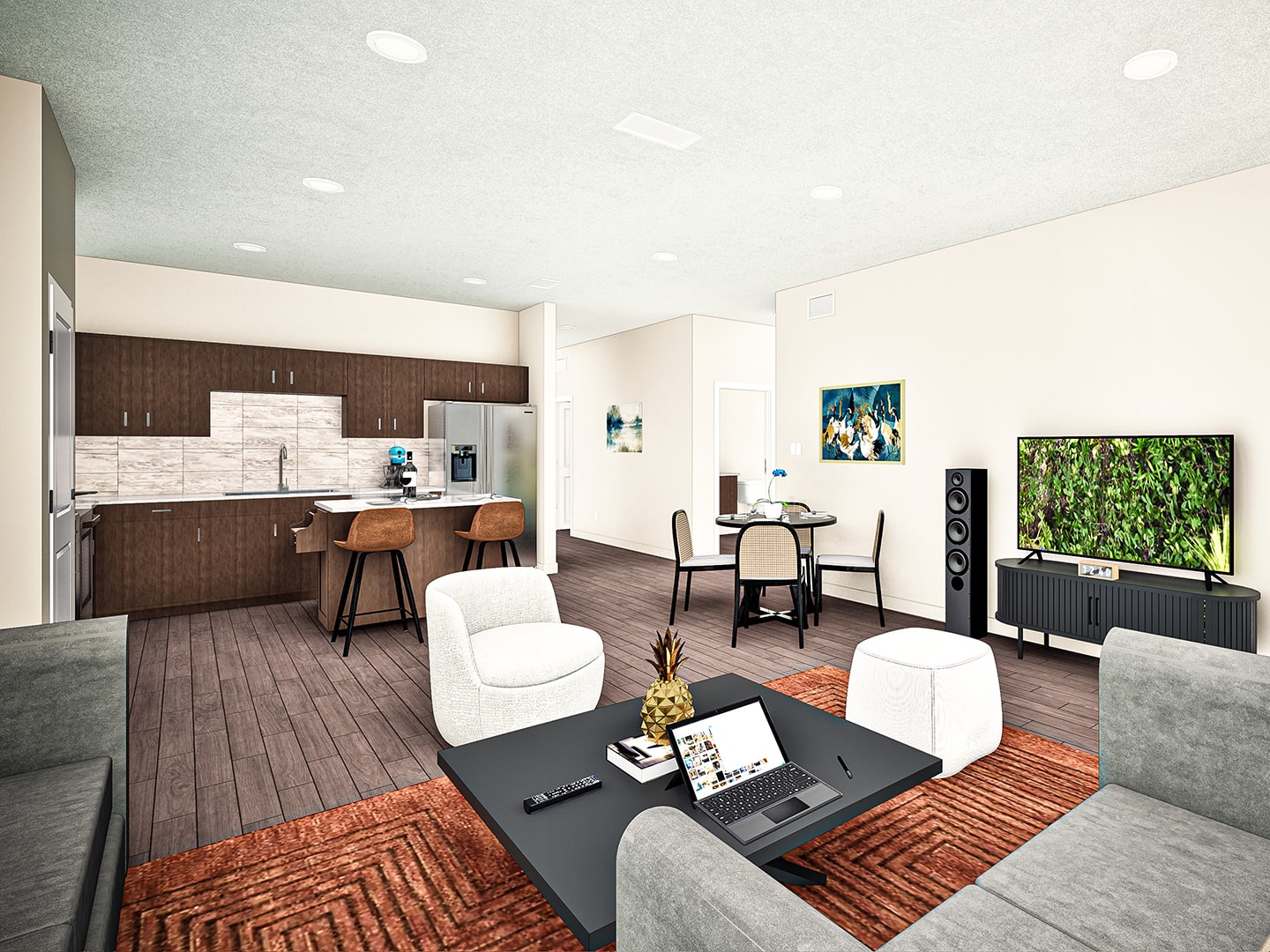From The Desk Of The CEO | Aug 8, 2024
The Power of Visuals: Why Renderings are Crucial in Real Estate Projects

From the Desk of the CEO
In real estate development, making informed decisions and securing stakeholder support is critical. One of the most powerful tools in achieving these goals is the use of renderings. These visual representations of proposed projects play a pivotal role in various stages leading up to development. From conceptualization to final approvals, renderings are indispensable. Here’s why:
Visualizing Concepts and Ideas
At the initial stages of a real estate project, developers and architects have numerous ideas and concepts. Renderings bring these ideas to life. They transform abstract concepts into tangible visuals, allowing stakeholders to understand the vision clearly. This visualization is essential for refining ideas and ensuring that all parties are on the same page.
Effective Communication
Communication is key in all real estate development projects. Renderings serve as a universal language that bridges the gap between technical experts and non-specialists. Whether you’re presenting to investors, potential buyers, or community members, high-quality renderings make complex architectural plans comprehensible. They help convey the scale, design, and ambiance of a project far more effectively than blueprints or technical drawings.
Marketing and Pre-Sales
Before a single brick is laid, real estate projects often rely on pre-sales to secure financing and gauge market interest. Renderings are a critical marketing tool in this phase. They are used in brochures, websites, and sales offices to attract potential buyers. Accurate, photo-realistic images of the proposed development can generate excitement and urgency, leading to higher pre-sale rates.
Obtaining Approvals and Permits
Securing the necessary approvals and permits from local authorities can be a difficult process. Renderings play a vital role in this stage by providing a clear visual presentation of the proposed project. They help regulatory bodies understand the project’s impact on the surrounding environment, aiding in a smoother approval process. Detailed renderings can address concerns related to aesthetics, environmental impact, and community integration.
Facilitating Design Decisions
Throughout the design process, renderings are used to test and refine various elements of the project. They allow architects and designers to experiment with different materials, colors, and layouts. This iterative process ensures that the final design is both functional and aesthetically pleasing. Additionally, renderings can help identify potential design issues early, saving time and resources in the long run.
Engaging the Community
Community engagement is a crucial aspect of real estate development, especially for large-scale projects. Renderings can be used in public meetings and consultations to demonstrate the benefits of the project to the local community. They help address concerns and build support by showing how the development will enhance the area.
Investor Confidence
For developers seeking investment, detailed and realistic renderings are a must. They provide a clear picture of the final product, helping to build confidence among potential investors. Renderings can be included in pitch decks and investment proposals, demonstrating the viability and attractiveness of the project.
In real estate development, the adage “a picture is worth a thousand words” holds particularly true. Renderings are more than just pretty pictures; they are powerful tools that facilitate communication, decision-making, and marketing. By bringing concepts to life, they play a critical role in the successful development of real estate projects. As technology continues to advance, the importance and impact of renderings will only grow, making them an indispensable part of the real estate development process. 

Sincerely,
Ezra Stark
Chief Executive Officer

